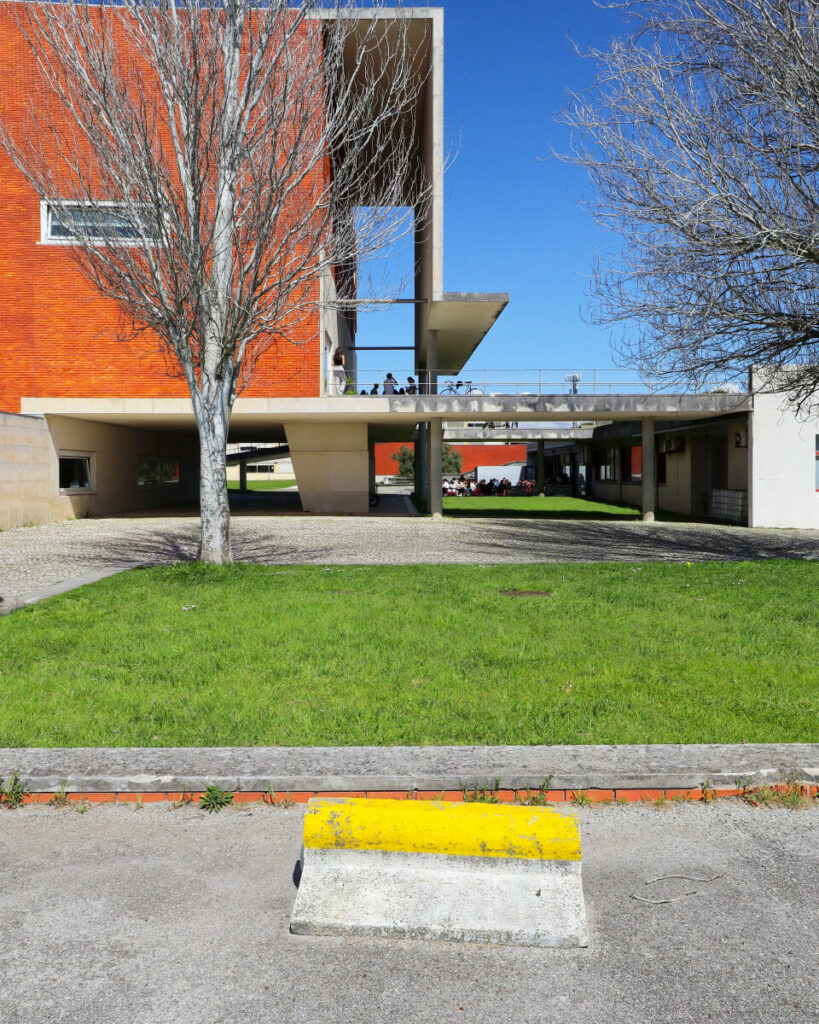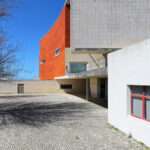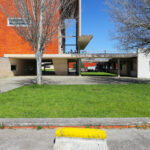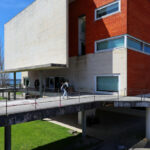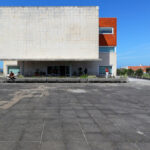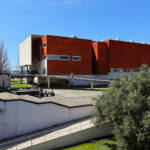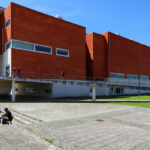The Library of the University of Aveiro, designed by the renowned architect Álvaro Siza, stands as a testament to innovative architectural design and thoughtful integration with its environment. Conceived as part of the University Campus of Santiago, the library embodies a vision of autonomy and harmony within the campus’s broader architectural landscape. Siza’s design philosophy is deeply rooted in the natural geometry of the surrounding salt evaporation ponds, which inspired the library’s architectural form and spatial dynamics.
The building’s design is characterized by its clean lines and strategic use of light, creating a serene and contemplative atmosphere for study and research. Siza’s approach to the library’s architecture is evident in his statement: “there lies the origin of the Library’s architecture, from the implantation to the horizontal openings, from the volume to the invading light.” This vision is realized through the library’s horizontal openings and volumetric forms, which allow natural light to permeate the interior spaces, enhancing the reading experience.
The library’s interior is designed to foster a sense of unity and connection. Openings between reading rooms on different floors create visual links that encourage interaction and a sense of community among users. This spatial fluidity is a hallmark of Siza’s design, promoting both individual focus and collective engagement.
Despite challenges during construction, the library was ultimately celebrated for its architectural excellence, earning Siza the title of Honoris Causa Doctor by the University of Aveiro. The building’s thoughtful integration with its surroundings, use of natural materials, and emphasis on light and space make it a significant architectural achievement, reflecting Siza’s commitment to creating environments that are both functional and inspiring.
